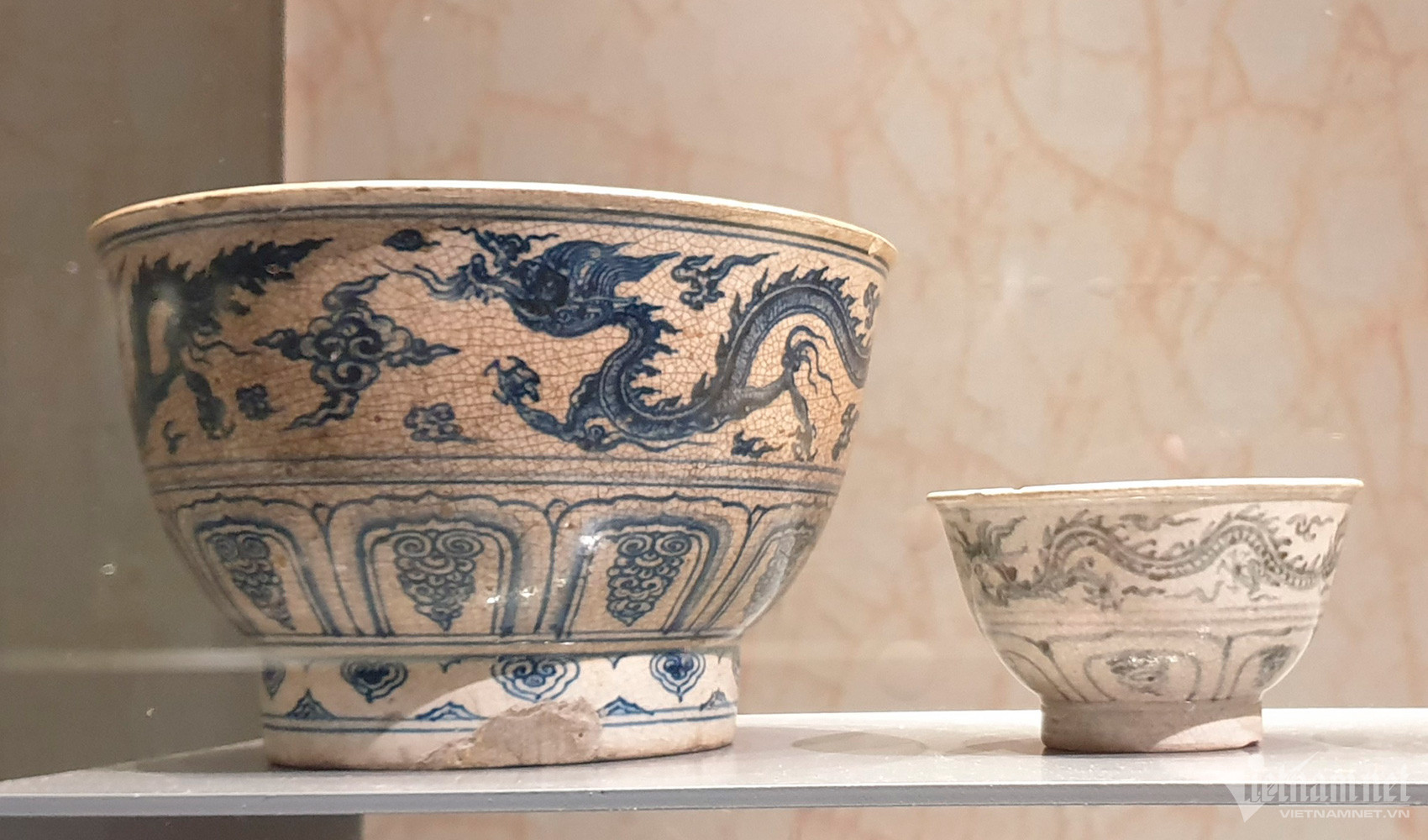The exquisite designs, unique patterns, and delicate hand-painted decorations of Bat Trang ceramics will definitely captivate art enthusiasts and collectors alike.
From intricately designed vases and plates to captivating figurines and ornaments, the allure of Bat Trang ceramics has transcended borders, leaving an indelible mark on the global stage. If you are interested in these delicate masterpieces, you should take the opportunity to visit Bat Trang Pottery Village during your Hanoi travel journey.
1. Popular designs of Bat Trang ceramics Vietnam

Bat Trang Vietnam pottery boasts a diverse range of captivating creations, falling into distinct categories that reflect its utility and beauty:
- Worship items: Including incense bowls, lid bowls, worship water bowls, flower vases, incense burners, and lampstands. What sets Bat Trang ceramics apart is the meticulous engravings adorning these products.
- Household essentials: Bat Trang artisans also craft practical products for daily use, including jars and tableware like bowls and plates. Teapots of diverse designs are also part of their repertoire, catering to various preferences.
- Decorative ornaments: Decorative ceramics encompass an array of artistic delights. From exquisite paintings and lamps to intricately designed vases and statues, each piece emanates a timeless charm that will add a touch of elegance to any space.
2. Signature colors of Bat Trang ceramics Hanoi

In the bygone days, Bat Trang ceramics only had the blue glaze color. However, the art has evolved magnificently, boasting an impressive array of over 50 enchanting lines of enamel, which are equivalent to numerous mesmerizing colors. Crystallized glaze is a combination of earth and glaze, meticulously made through a delicate process of mixing, coloring, and calcination at temperatures exceeding 1,000°C.

This alchemical transformation gives birth to a rich spectrum of hues, ranging from pure whites to vibrant turquoise and captivating blues. The crystallized glaze possesses an unparalleled sophistication, revealing depth upon close inspection and retaining sharpness even from afar. When illuminated by light, it emanates an array of shimmering colors, enveloping each piece with an ethereal beauty that leaves onlookers spellbound.
3. Textures and patterns of Bat Trang ceramics over time
3.1. Bat Trang pottery in the 14th and 15th centuries

During the 14th and 15tg centuries, the artistic motifs adorning Bat Trang ceramics primarily revolved around intricate floral patterns and graceful leaves. The prevailing decorative style of the era embraced the technique of etching, an exquisite combination of brown and blue enamels with skilled embossing. It was during this period that the captivating blue enamel made its debut, marking an important milestone in the evolution of Bat Trang ceramics.
3.2. Bat Trang pottery in the 16th century

In the 16th century, Bat Trang ceramics witnessed another remarkable evolution, with textures becoming more elaborate and intricate than ever before. The artisans decorated their creations with a lot of captivating patterns, ranging from majestic dragons to vibrant depictions of human activities and serene landscapes. Notably, the lotus flower, a symbol of purity and beauty, graced the ceramic pieces, adding a touch of elegance. Additionally, this century marked the blossoming of blue enamel, with its usage reaching new heights of sophistication.
3.3. Bat Trang pottery in the 17th century
As the 17th century unfolded, Bat Trang ceramics witnessed a significant innovation, which is the departure from the heavy reliance on blue enamel patterns observed in the previous century. Artisans at that time began to explore new avenues of creativity, shifting their focus toward carving and embossing techniques. While dragons continued to reign as a predominant motif, a delightful array of other patterns and motifs emerged, including crane, 8-petal flower, chrysanthemum, and swastika.
3.4. Bat Trang pottery in the 18th century

Until the 18th century, Bat Trang ceramics underwent a significant shift as the blue enamel line gave way to the elegant allure of white enamel. During this period, Bat Trang artisans honed their craft, using intricate embossing techniques to craft motifs and patterns. Dragons, a perennial favorite, continued to grace the ceramic pieces, alongside enchanting depictions of birds, lotus, bamboo, flowers, and waves.
3.5. Bat Trang pottery from the 19th century to the present
Since the 19th century, Bat Trang ceramics have undergone a noticeable revival as decorative paintings with blue enamel made a comeback. Moreover, the artisans also welcome a more adventurous approach, combining blue glaze with a myriad of different enamel lines to produce an enchanting array of products adorned with diverse and eye-catching colors. While preserving the charm of traditional motifs and patterns, Bat Trang ceramics also have fresh inspirations. Many pieces showcased the artistic brilliance of the craftsmen, drawing upon classic themes and other timeless narratives.
Acquainting yourself with the aforementioned traits will undoubtedly aid you in confidently discerning authentic Bat Trang ceramics from counterfeits, in case you want to bring home a piece as cherished souvenirs.

